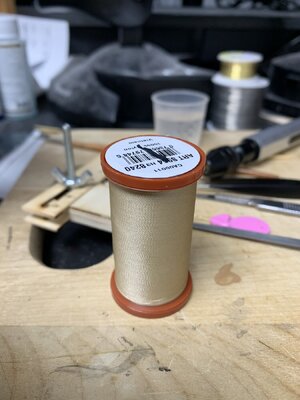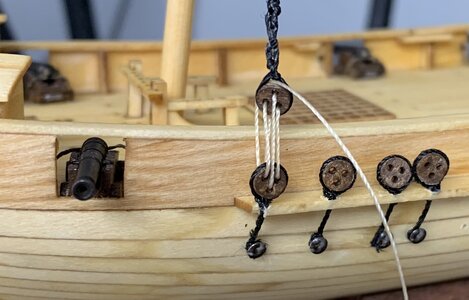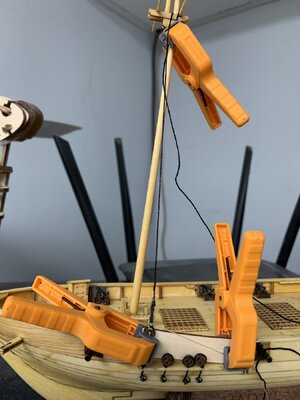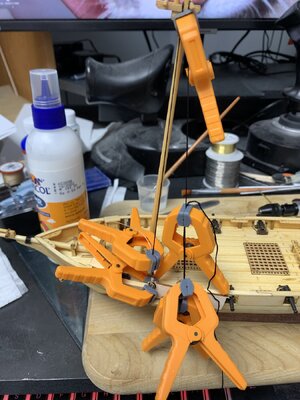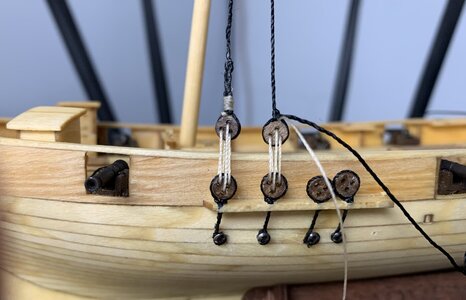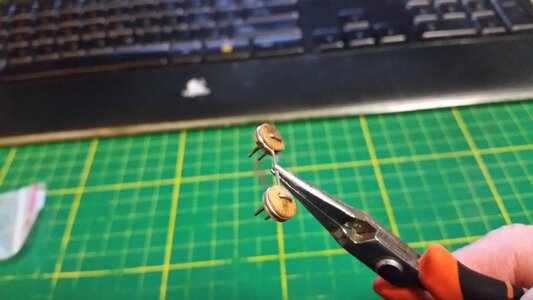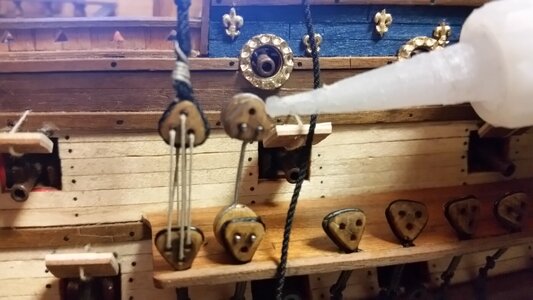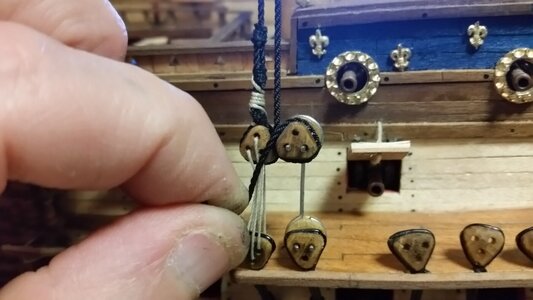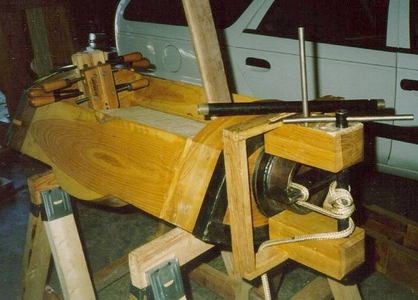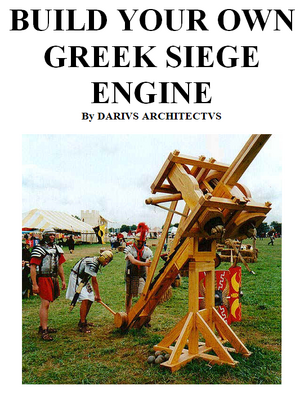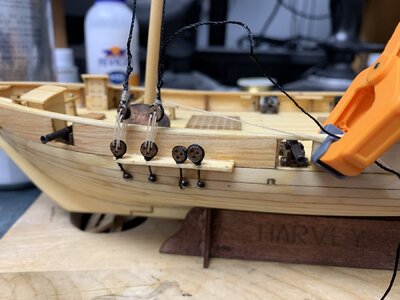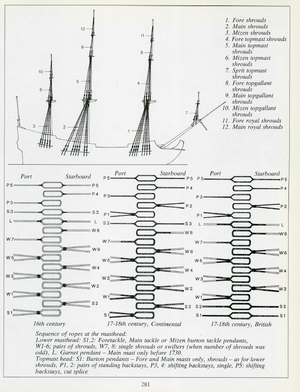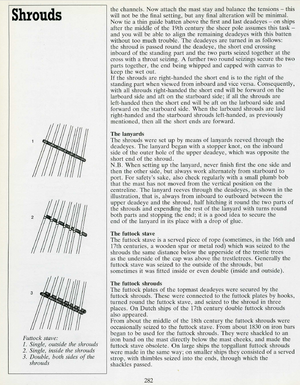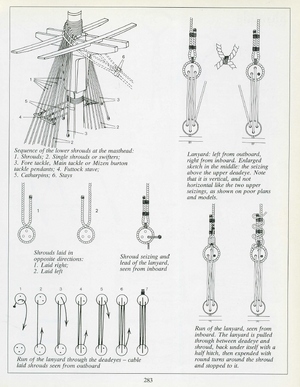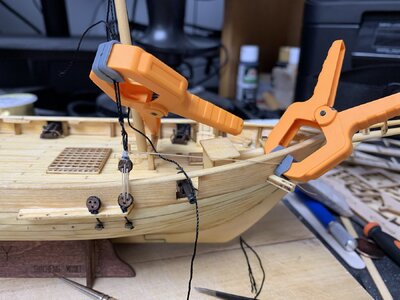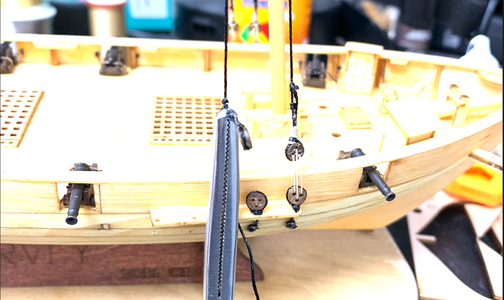Why do these two shrouds and their lashings appear slack? Oh, and you want to rig shroud in pairs, one on port side, the other on starboard side, or you will bend your mast to one side. Get a pair of shrouds rigged on the starboard side to balance these two out. Never tension newly installed shrouds on one side of the ship only. Move in port/stbd pairs from fore to aft. Fix these things
now or later it will get quite ugly. If you tighten the lashings and the upper and lower deadeyes end up too close to each other, you may need to re-tie the shrouds at the top and shorten them just a tiny bit. That's a bit dicey. I am hoping that when you put two shrouds on the other side of the ship, the mast will lean to starboard enough to tighten these port shrouds, without leaning too far and end up not being vertical relative to the hull.
Here is the order for rigging the shrouds, From Wolfram zu Mondfeld. Note, this is for large, square riggers. On your schooner each loop of shroud line around the masthead yields two shroud lines on one side of the vessel. At the masthead, the loops at the top are layered as shown below in the top-view diagrams, with bottom of the diagram being forward, and the top of the diagram being aft. Note, on my schooner model, I omitted the pendants used for cargo loading tackles (indicated below as fore, main, and burten pendants). The model was too small to cram the cargo tackles in beneath the shrouds/ratlines so I left them out and just rigged the shrouds.
View attachment 438142
View attachment 438144
You cans see in the picture directly below how the shroud pairs are looped around the masthead and stack up in one of the patterns above.
View attachment 438143



